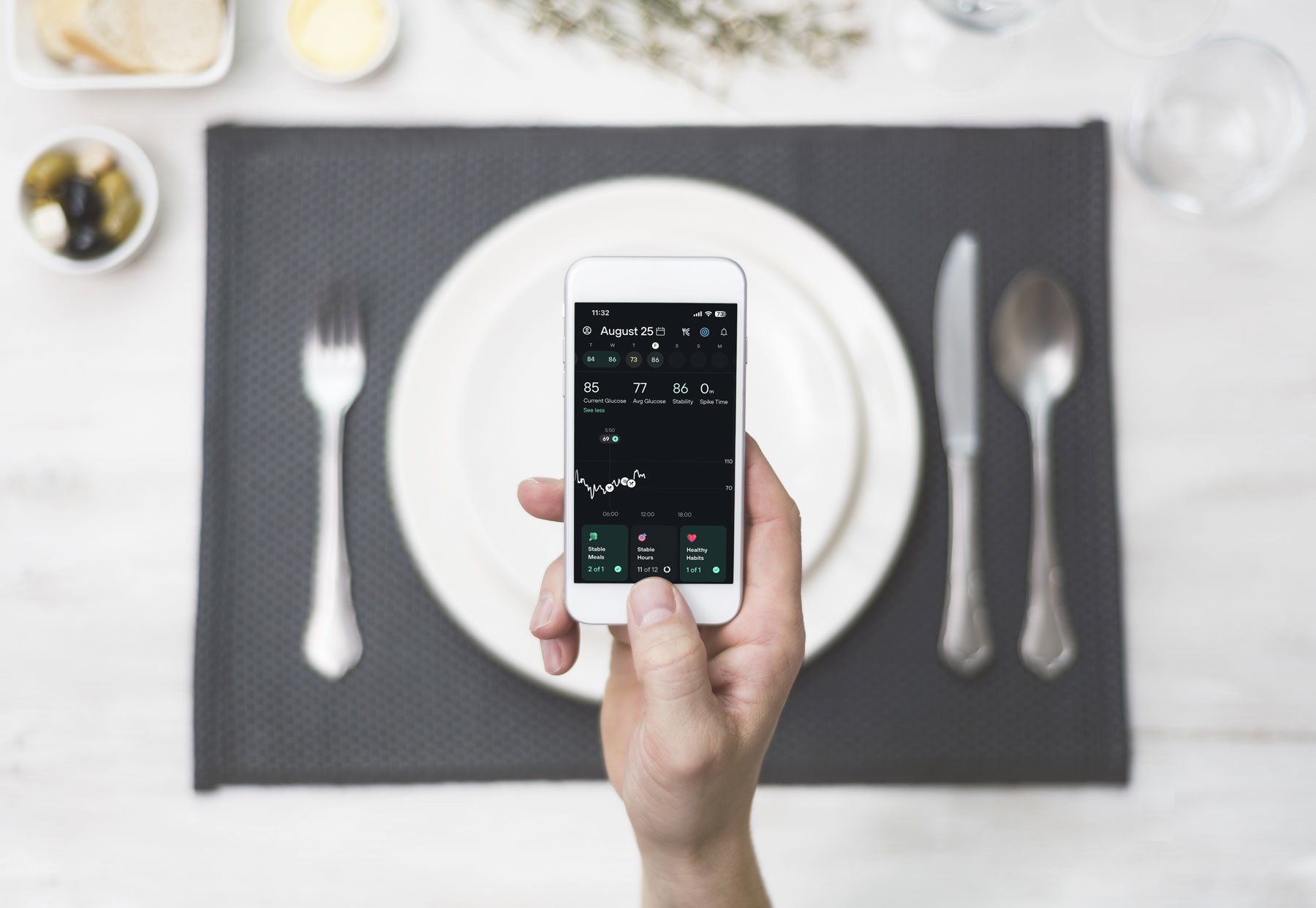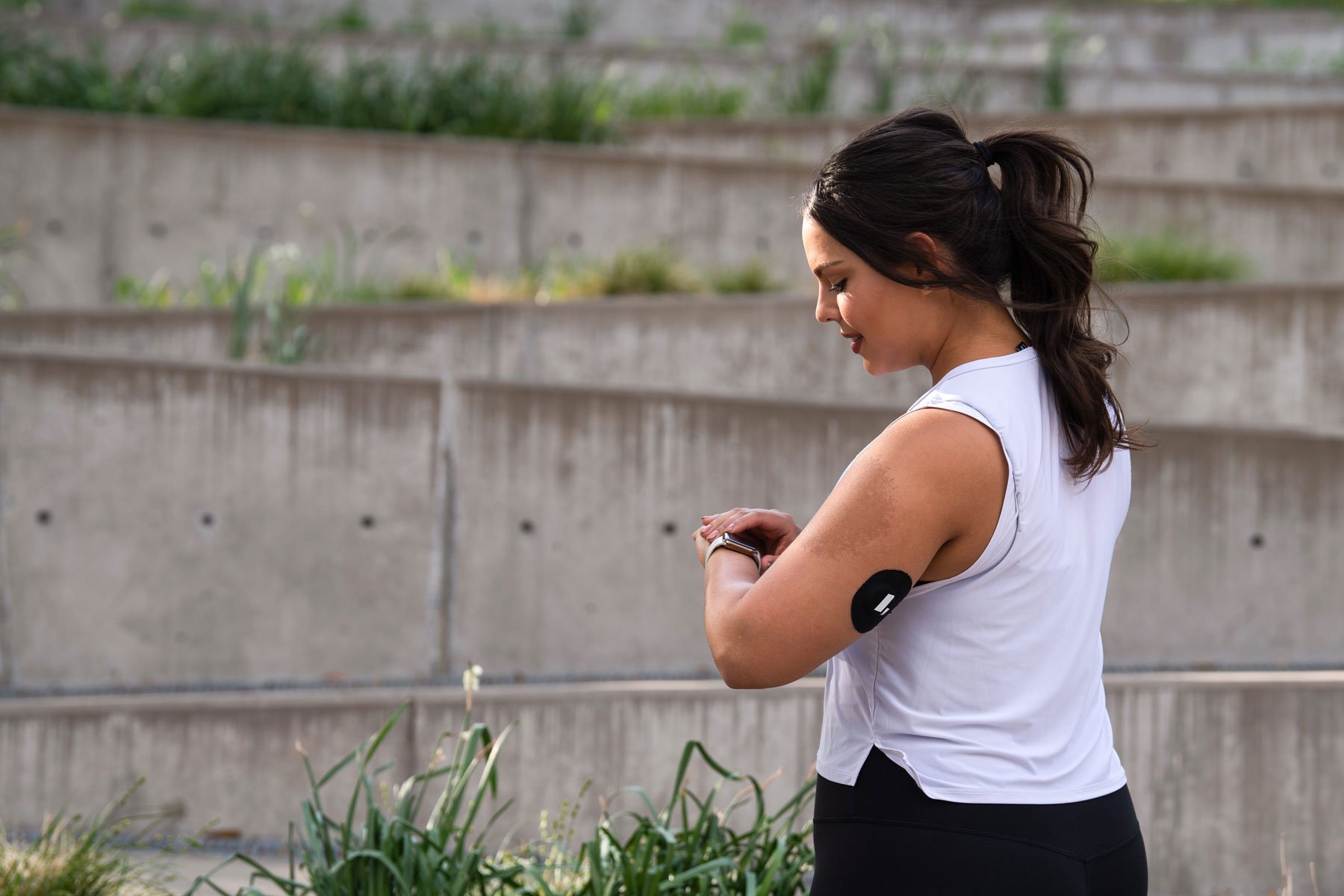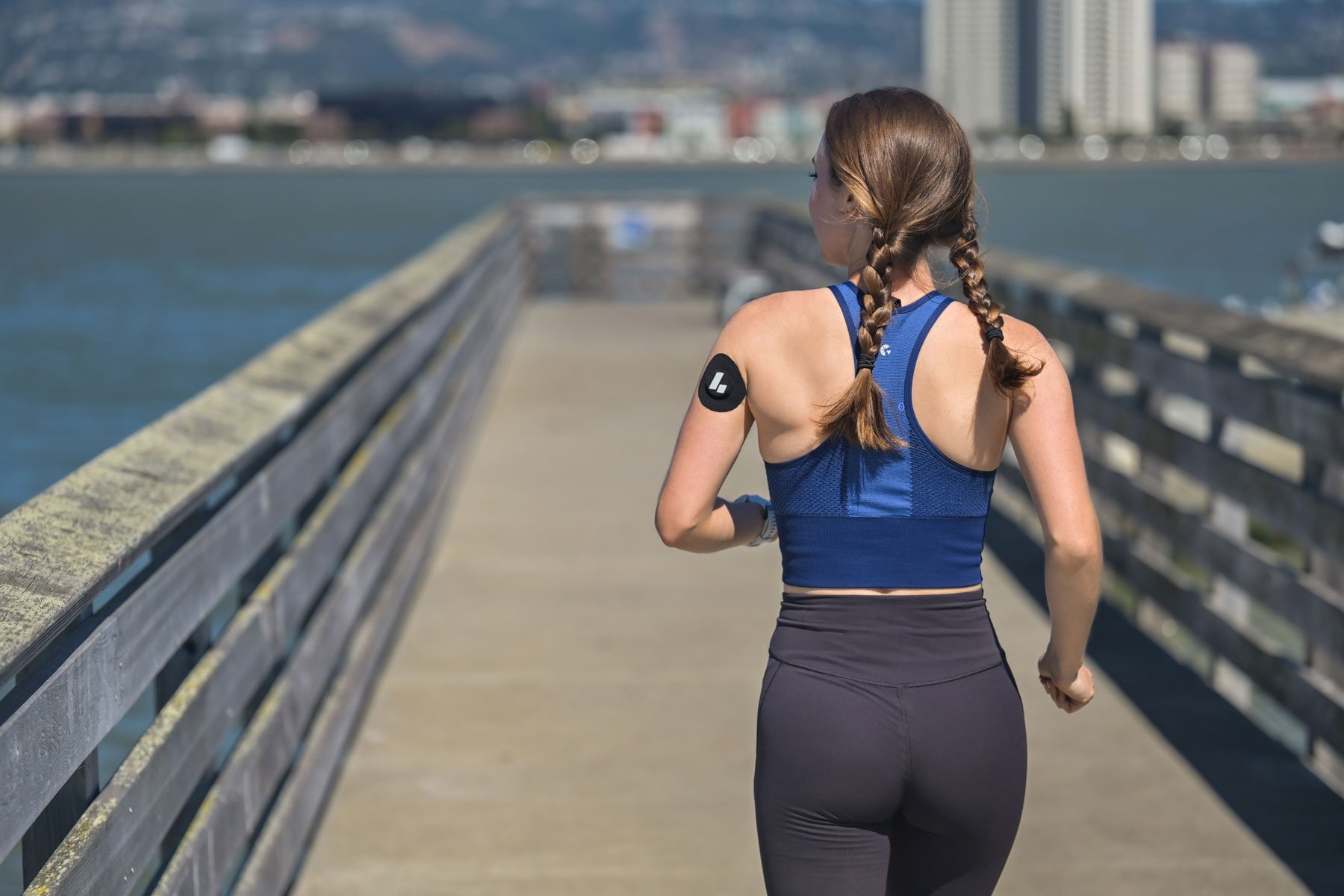We all have times when our blood sugar spikes. Maybe you had oatmeal for breakfast or a smoothie that wasn’t quite as healthy as you thought it was. Some of us may not notice the rise in blood sugar, but for others, it can come with headaches, fatigue, or other symptoms—either during the rise or the subsequent crash.
High blood sugar levels, or hyperglycemia, are common in people with Type 1 diabetes (largely due to the pancreas not producing enough insulin) and Type 2 diabetes. The metabolic systems in people with either type of diabetes struggle to clear glucose from their blood. But glucose spikes and chronically high glucose can be problematic even if you don’t have diabetes. Optimal glycemic control is a crucial component of metabolic health—not just of diabetes care—and benefits every system in your body, from cognition and mood to immunity, sexual health, and risk of chronic disease.
Here’s what you need to know about the main factors that contribute to high blood sugar if you don’t have diabetes, including lifestyle habits and underlying medical conditions, the best way to get your blood sugar tested, plus what you can do to manage your blood sugar better.
What counts as high blood sugar?
Glucose is a molecule that travels through your bloodstream to every cell in your body and serves as your body’s primary source of fuel throughout the day. Glucose comes mainly from eating carbohydrates, though your body can also synthesize it if needed. In response to rising blood sugar levels, your pancreas releases insulin, a hormone that “unlocks” your cells, pushing glucose into the cells where you can use it for energy now or store it for later use. Through these mechanisms involving glucose and insulin, your body aims to maintain stable blood glucose levels, or homeostasis. When this balance cannot be maintained, high blood sugar levels can result.
Often, we talk about high blood sugar in the context of diabetes, but it also commonly occurs in the absence of diabetes. According to guidelines from the International Diabetes Federation and the Centers for Disease Control and Prevention, blood glucose should rise no more than 140-180 mg/dL following a meal. However, there’s good evidence that suggests you should aim lower. Here’s what Levels recommends based on research done on people without diabetes and the guidance of our expert advisors:
- Blood glucose levels stay below 110 mg/dL after eating.
- The rise between pre- and post-meal glucose is no more than 30 mg/dL.
- Blood glucose levels return to baseline within two to three hours.
Fasting glucose is another marker to keep in mind, as it measures your blood sugar unaffected by a meal—essentially your baseline glucose. The standard guideline for this number is under <100 mg/dL, but Levels suggests aiming for <90mg/dL, as evidence suggests your risk of dysfunction increases even at the higher end of “normal.”
What are the symptoms of high blood sugar?
When glucose spikes in your bloodstream, you may feel it. Understanding your blood glucose levels throughout the day and in response to certain foods can help you connect the dots between what you’ve just eaten and the symptoms of hyperglycemia (the blood sugar spike) and hypoglycemia (the subsequent crash). These symptoms include:
- Increase in thirst and dry mouth
- Weakness and fatigue
- Headaches
- Brain fog
- Anxiety or jitters
What causes high blood sugar in people without diabetes?
Blood sugar rises when more glucose enters the blood than your body can clear quickly. Rising blood sugar after eating is normal, and your body’s metabolic machinery knows how to get you back to homeostasis.
What we want to avoid are sharp, rapid rises, which can trigger reactive hypoglycemia—low blood sugar when your body releases too much insulin. This cascade can result in oxidative stress and cellular dysfunction.
Over time, repeated high blood sugar levels can drive chronic health problems like blood vessel and nerve damage (including neuropathy), kidney disease, and problems with your heart, vision (including retinopathy), and hearing.
Here are some of the most common causes of blood sugar spikes in people without diabetes.
Eating refined carbohydrates and sugar
Since carbohydrates become glucose once digested, eating too many carbs at once can overwhelm your body’s glucose-clearing systems, especially if those carbs are digested and absorbed rapidly. For example, refined flours, sugary drinks, and pure sweeteners like honey or table sugar are much more likely to lead to a spike than, say, the handful of carbs in a whole vegetable.
In addition to the types of carbs, other factors determine how far your blood sugar rises after eating, including what you eat them with (nutrients like protein, fat, and fiber slow down digestion and the secretion of sugar into the bloodstream), the order in which you eat your food, portion size (larger portions mean more glucose), whether you exercise after you eat, your microbiome, and your unique glycemic response. What spikes one person may not spike someone else.
Intense exercise
Given that exercise, including high-intensity training, improves measures of high blood glucose in both the short- and long-term, many people are surprised to learn that a single session can cause a spike. But this is one rise that is not concerning. When you’re exercising hard, your body can pull from glucose stores in your liver, causing more sugar to flood your bloodstream to fuel your workout. In fact, these spikes can work for you by improving insulin function over time.
Stress or trauma
When under stress, your body enters fight-or-flight mode. To give you the energy required to flee or fight that threat, your body releases stress hormones that cause blood sugar levels to rise. High stress from time to time is not worrisome. However, chronic stress lingers, and too many fight-or-flight episodes can degrade insulin function over time. If you wear a continuous glucose monitor (CGM), you may find that you can match episodes of stress—traffic, a fight with your spouse, public speaking—to specific glucose spikes.
Poor sleep
Even a single night of poor sleep can impair your glucose processing the next day, making you more likely to eat more calories (choosing foods that cause a spike), be in a higher stress state, and experience insulin resistance and inflammation. People who routinely get too little shut-eye are at a higher risk for developing Type 2 diabetes. In addition, there’s evidence that deep sleep brain waves that occur during NREM sleep are directly related to next-day glucose control.
Conditions that can cause high blood sugar without diabetes
While you may be able to pinpoint certain lifestyle factors causing blood sugar spikes, you’ll also want to consider the possibility of underlying medical conditions that have been shown to affect blood glucose.
Prediabetes and insulin resistance
Insulin resistance occurs when repeated spikes cause cells to start to “numb” to insulin’s effects, making it harder to clear glucose from the blood. Prediabetes is the state of insulin resistance in which your fasting glucose or A1c (another measure of glucose levels) is chronically elevated beyond what’s considered normal: 100–125 mg/dL fasting glucose or 5.7 to 6.4% A1c (beyond those numbers you have Type 2 diabetes). In this state, your body has lost some of its ability to clear glucose efficiently, so you’re more likely to see spikes in addition to your high baseline levels.
Beyond being a stepping stone toward Type 2 diabetes, prediabetes has its own health consequences. More than 1 in 3 American adults have prediabetes, and more than 80% don’t even know it.
PCOS
Polycystic ovary syndrome (PCOS) is a hormonal condition that affects females and often involves an increase in androgenic hormones (“male hormones”) and insulin. People with PCOS often have insulin resistance and high blood sugar, which can cause further hormone dysfunction in a vicious cycle, leading to several downstream symptoms like weight gain, acne, and hair growth.
Cushing’s syndrome
Cushing’s syndrome is a rare disease where your body chronically makes too much cortisol. The hormone cortisol has a range of functions throughout the body, including regulating your blood sugar. Too much cortisol impairs glucose metabolism in up to 84% of people with Cushing’s, creating an increased risk of metabolic syndrome and heart attack, which can persist even after treatment.
Pancreatic conditions
Your pancreas contains cells that secrete hormones like insulin. Certain conditions that affect the pancreas, including pancreatitis (inflammation of the pancreas), may damage these cells and affect insulin function and have been linked to hyperglycemia, which can lead to diabetes.
What to do when you have high blood sugar?
When you recognize the signs of hyperglycemia or see the rise in real-time on your CGM, there’s one thing you can do right now to help your blood sugar fall.
In the moment
Get up and get moving. Physical activity allows muscles to absorb up to 50 times the glucose compared to when you’re at rest. Your glucose levels will fall as muscles use that blood sugar to power movement. A 30-minute walk within 30 minutes of eating is ideal, but any activity helps. If you have a glucose meter, you’ll typically see that you’re more likely to get a blunted curve compared to a spike when you add a walk after dinner.
When to see a doctor
If you’re struggling with blood sugar control because these spikes happen often throughout the day, it’s a good idea to make an appointment with your healthcare provider. There, you can have testing done that looks at your fasting blood glucose and HbA1c to measure your blood sugar [more on this below]. If concerns exist for other diseases, such as PCOS, your healthcare team may explore additional testing, or recommend working with a dietitian to help build a sustainable meal plan optimized for metabolic health.
How to measure blood sugar
Some tools and tests can give you insight into your real-time and long-term blood sugar—useful knowledge that goes beyond diabetes management.
CGM
A CGM is a wearable biosensor that takes real-time readings of your blood glucose levels and sends the data to your smartphone. Initially developed for people with diabetes, who need to monitor their glucose levels to carefully dose themselves with the right amount of insulin, CGMs are now commonly used by people without diabetes to see how their diet and lifestyle impact their glucose and make healthy changes that support stable blood sugar.
Finger stick
With a finger stick test, you prick your finger with a needle to produce a drop of blood and place it on a small device that analyzes blood sugar levels. The tests are available at any drug store, but because they are not continuous, they only give you a snapshot, and you can’t see your entire glucose curve—e.g., how far your glucose rose and fell.
Blood tests
Your annual physical typically includes at least one blood test to assess your glucose levels.
Fasting glucose is a measure of your blood sugar level after fasting overnight. This test gives you a picture of your baseline glucose—a higher number can indicate metabolic dysfunction. However, as a single point-in-time measure, it can’t show your glucose dynamics—how well your body responds to glucose.
A1c, or HbA1c, is another blood test. It measures your average blood sugar over a more extended period, around three months, by looking at the percent of your hemoglobin that has glucose stuck to it (known as glycation). While this test also doesn’t measure glucose dynamics, it provides a broader view of your average glucose over time than fasting glucose.
Other tests to assess your metabolic health include an oral glucose tolerance test, in which you consume a sugary drink and then measure your response at regular intervals to see how efficiently your body handles the glucose load and a fasting insulin test.
Levels members can order on-demand blood testing that covers fasting insulin, along with four additional metrics not often collected at a standard physical, including ApoB, triglycerides, uric acid, and HbA1c.
How to prevent high blood sugar
Fortunately, healthy lifestyle choices can help maintain stable blood sugar levels. To decrease the risk factors of having high blood sugar without diabetes, here’s what you can do:
Eat nutritious whole foods
While there are many potentially spiking ultra-processed foods at grocery stores—as much as 71% of the items on shelves—you still have many foods to choose from to build a meal plan that promotes stable blood sugar. And while everyone reacts to foods differently, a balanced diet of whole, unprocessed foods is unlikely to cause spikes. Non-starchy vegetables, nuts and seeds, beans, lentils, tofu, fruit like berries, eggs, plain Greek yogurt, and cottage cheese are among foods that should keep your blood sugar steady. Improving your diet can also help with weight loss, which improves glucose control.
Minimize refined carbs and added sugar
White flour and refined grains such as white rice are digested quickly and raise your blood sugar severely. Added sugar can also increase inflammation and your risk for obesity, prediabetes, Type 2 diabetes, and heart disease. Generally, consume as little added sugar and refined carbs as possible.
Exercise daily
Many studies have demonstrated that regular exercise plummets your risk of diabetes, with the best results at 5 to 7 hours per week. Physical activity keeps visceral fat, the inflammation-causing fat that hugs the organs around your middle, at bay. It also improves muscle glucose uptake, which removes excess sugar from your bloodstream. Cardiovascular exercise gets the job done, but resistance training grows muscle, benefiting glycemic control. Other strategies, like breaking up sedentary time throughout the day with short movement “snacks” and walking after meals, also lower blood glucose and improve insulin sensitivity.
Manage stress
Stress isn’t something you can chase away completely, but the more you can lower unnecessary stress, the better your overall health. Among people who have diabetes, stress management training has been shown to improve A1c, and can be a critical part of their treatment plan. Stress management tactics, such as mind-body practices, changing your diet, or spending more time with loved ones, help you cope better with the daily challenges you face.
Get regular blood work
Insulin resistance can start long before high glucose shows up. Testing fasting insulin and other markers of metabolic health will let you know where you stand—and allow you to intervene with lifestyle changes that reverse metabolic dysfunction.
Use a CGM to learn what causes high blood sugar in your body
What goes on inside your body may seem like a mystery, but a CGM can unlock some of the unknown. Blood sugar response to food is unique to the individual. There may be some traditionally healthy foods that surprisingly cause blood glucose spikes that you otherwise wouldn’t have discovered without the ability to monitor your blood sugar in real time. You can also use a CGM to understand how non-food factors, such as stress, sleep, or an ice bath, affect your blood sugar management that day.
 Track your blood sugar to help prevent future disease
Track your blood sugar to help prevent future disease
The best way to get a real-time view of your blood sugar is with a CGM and an app like Levels to help you understand your data. Levels members get access to the most advanced CGMs along with personalized guidance to build healthy, sustainable habits. Click here to learn more about Levels.









